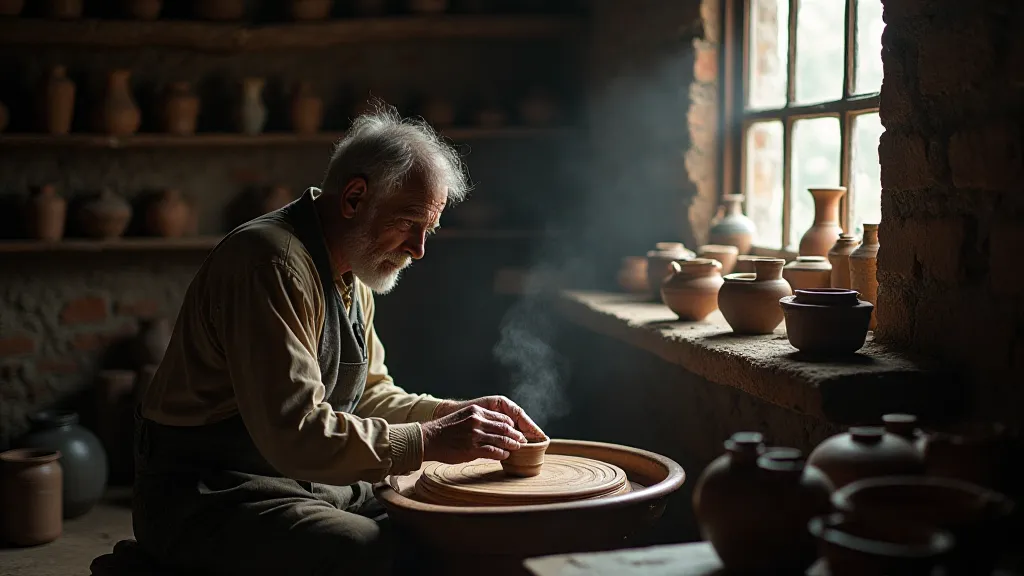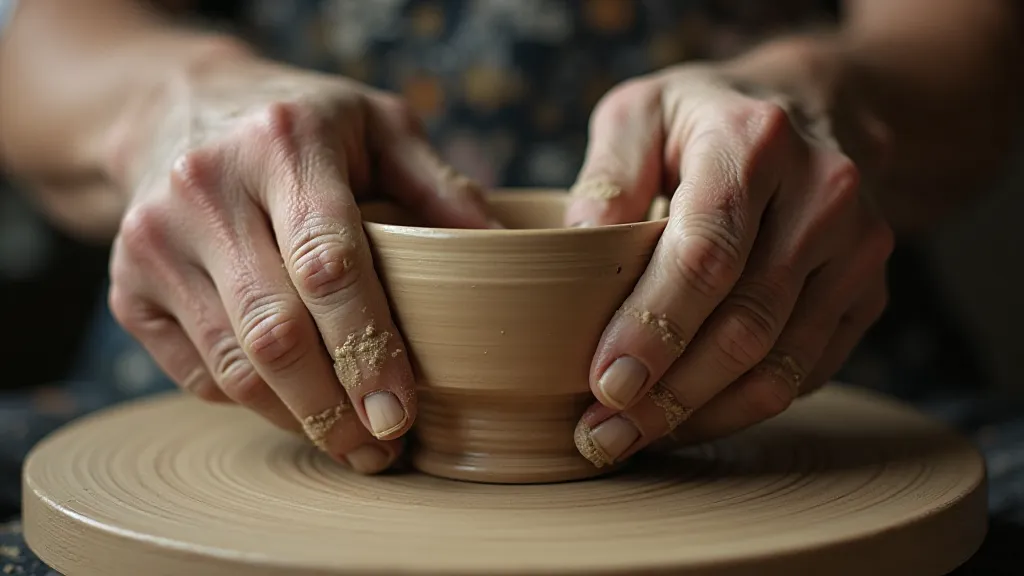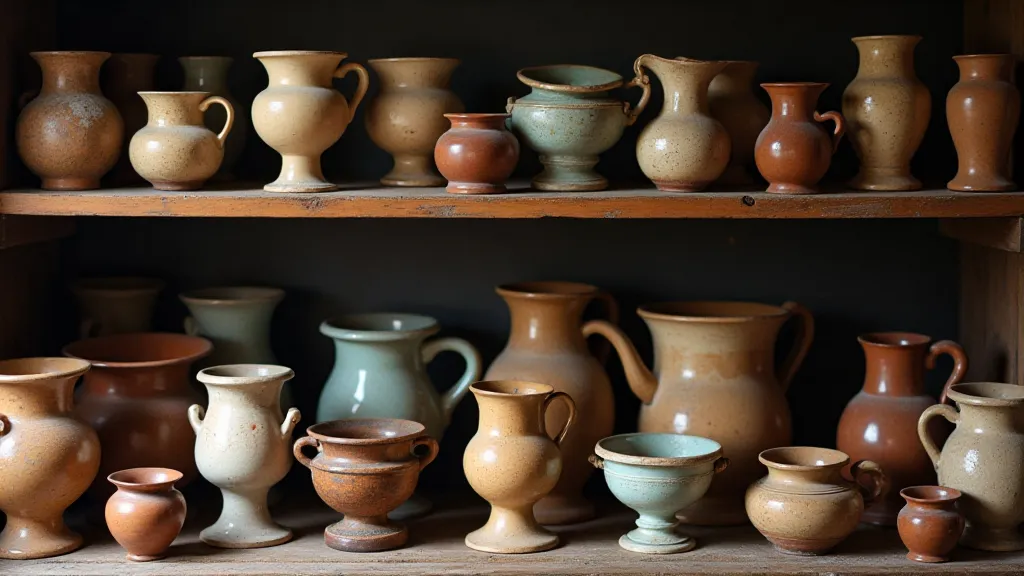Echoes of the Hand: The Legacy of Apprenticeship in Pottery Guilds
The gentle hum of the wheel, the cool dampness of the clay between your fingers, the satisfying curve taking shape under your guidance – these are sensations that transcend time. Pottery, in its myriad forms and regional variations, speaks of a connection to the earth, a connection deeply rooted in human history. But beyond the inherent beauty of the finished product lies a story often overlooked: the story of the hands that shaped it, and the tradition of apprenticeship that has, for centuries, guarded the secrets of regional pottery techniques.
My own introduction to this world came unexpectedly. My grandfather, a retired clockmaker, had a friend, old Silas, a potter from the Appalachian region. Silas’s workshop wasn’t a gleaming, modern studio; it was a space that breathed history. The air was thick with the scent of woodsmoke and clay, and the walls were lined with generations of pottery, each piece whispering tales of the hands that had brought it into being. Silas didn’t offer lessons formally. Instead, I simply *watched*. I watched his movements, the subtle pressure he applied, the way he coaxed the clay to obey. He rarely spoke, but when he did, his words were like precious gems – concise, insightful, and laden with meaning. He embodied a tradition, a lineage passed down through an unspoken covenant of apprenticeship.

The Guild System: Guardians of Craft
The apprenticeship system, particularly within pottery guilds, wasn’t merely about learning a skill; it was about inheriting a cultural identity. Across the globe – from the Iznik pottery workshops of Turkey to the Jingdezhen kilns of China and the Acoma pueblos of New Mexico – guilds provided a structured framework for preserving techniques and ensuring quality. In Europe, the medieval guild system served as a vital economic and social structure. Becoming a master potter wasn't a solitary pursuit; it was a lengthy process, often spanning seven years or more. First came the period as an ‘apprentice’, learning the very basics: preparing clay, operating the wheel, trimming, glazing. Then came the 'journeyman' stage, where the aspiring potter traveled, honing their skills in different workshops and expanding their knowledge. Finally, after demonstrating mastery, they could apply to become a ‘master’, a testament to years of dedicated practice and adherence to the guild’s stringent standards.
Consider the Minoan pottery of ancient Crete. While the precise techniques remain a source of scholarly debate, it's clear that the vibrant depictions of marine life and elaborate geometric designs were the result of generations of accumulated knowledge, likely passed down through an apprenticeship model. Imagine a young apprentice carefully observing a master, painstakingly copying their designs, learning the subtleties of firing to achieve the characteristic red-orange hues. That lineage, that continuity of skill, is what allowed these extraordinary ceramics to flourish. The secrets of creating those unique color palettes, and achieving those specific firing temperatures, often weren’s formally taught but absorbed through painstaking observation and imitation – a testament to the power of the apprentice-master relationship.
The Master-Apprentice Relationship: Beyond Technique
The bond between a master potter and their apprentice was far more profound than a simple teacher-student dynamic. It was a relationship built on respect, trust, and a shared passion for the craft. The master wasn’t just imparting technical skills; they were instilling a philosophy, a deep understanding of the materials, and an appreciation for the history embedded within each piece. They taught the apprentice not just *how* to make pottery, but *why* it mattered.
I remember Silas once saying, "The clay doesn't lie. It tells you what you're doing right, and what you're doing wrong. You just have to learn to listen." This wasn's a lesson in pottery, it was a lesson in life. It spoke to the importance of observation, patience, and a willingness to learn from mistakes. These are qualities that transcend any specific craft, but they are particularly vital in a practice as demanding and unforgiving as pottery.
Regional Variations: A Tapestry of Influence
The apprenticeship system played a crucial role in preserving regional pottery techniques, allowing distinct styles to emerge and evolve over time. The Japanese Raku ware, with its intentionally cracked glaze and rustic aesthetic, owes its unique character to centuries of refinement within family-based workshops. The Majolica pottery of Tuscany, renowned for its vibrant colors and intricate designs, was nurtured by guilds that carefully guarded their glazing recipes and firing techniques. Even seemingly minor variations in clay composition, kiln design, and decorative motifs were transmitted from master to apprentice, ensuring the continuation of regional traditions. Understanding the subtle differences in the raw materials used – the specific type of clay, the sourcing of pigments – is crucial to appreciating the character of a piece, and reveals how the local environment deeply shaped the craft. For those truly interested in appreciating regional pottery, further exploration into The Weight of Memory: Preserving Regional Pottery Collections will reveal how profoundly geography and culture intertwine with artistic expression.

In the Pueblo pottery traditions of the Southwest, the techniques are deeply interwoven with spiritual beliefs and cultural narratives. Apprenticeships, often passed down through generations within families, ensure that the symbolic imagery and traditional firing methods are maintained, preserving not just a craft, but a vital part of a living cultural heritage. The deliberate choices in decorative motifs often carry deep spiritual significance, requiring not only technical skill but also a nuanced understanding of cultural symbolism. The journey of transforming the raw clay into a finished piece is far more than a technical process; it's a ritual steeped in tradition and meaning.
The Challenges of Preservation in the Modern Era
In today's fast-paced, mass-produced world, the traditional apprenticeship system faces significant challenges. The allure of quick financial rewards often leads young people away from the demanding and time-consuming path of mastering a craft. The decline of traditional guilds further weakens the structured framework that once ensured the preservation of regional pottery techniques. Furthermore, the standardization of industrial production often prioritizes efficiency over artistry, leading to a homogenization of styles and a loss of regional distinctiveness. The pressures of the global market frequently undermine the traditional systems that nurtured these unique crafts.
However, there’s a renewed appreciation for handmade goods, a yearning for authenticity and connection to the past. Workshops and demonstrations are providing opportunities for a new generation to experience the magic of pottery and learn from experienced potters. Though the formal guild system may have diminished, the spirit of apprenticeship lives on, albeit in more informal settings. The internet, surprisingly, is playing a role, connecting potters across vast distances and facilitating the sharing of knowledge and techniques. It's a fascinating paradox: a technology born of industrialization now serves as a tool for preserving traditional crafts. This resurgence of interest in handmade goods also reflects a broader cultural shift – a desire for objects with a story, with a sense of place, and with the mark of human touch. The journey of transformation, from raw earth to finished vessel, is now a story consumers actively seek to understand.
Collecting and Appreciating the Legacy
For those interested in collecting pottery, understanding the history of apprenticeship and the regional techniques involved can greatly enhance the appreciation of each piece. Look beyond the aesthetic appeal and consider the hands that shaped it, the generations of knowledge embedded within its form. Antique pottery, particularly pieces made within traditional apprenticeship settings, often carries a unique patina of age and character that cannot be replicated in modern production. A chipped rim or a slight imperfection can be a testament to the potter's hand and a reminder of the human element inherent in the craft. These marks of the maker are not flaws, but rather evidence of a process imbued with skill and dedication.

The nuances of firing processes, contributing to the unique characteristics of ceramics, can be further explored in The Unspoken Language: Ornamentation and Storytelling in Pottery.
The interplay between the ceramic form and the surrounding landscape is another captivating aspect that warrants further investigation.
The concept of embracing imperfections and finding beauty in the imperfect, as embodied in Japanese aesthetics, offers a different perspective on appreciating pottery.
The connection between pottery and the natural environment reveals a profound relationship between human creativity and the world around us.
The echoes of the hand endure, shaping not only the vessels we create but also the cultural narratives they carry.





